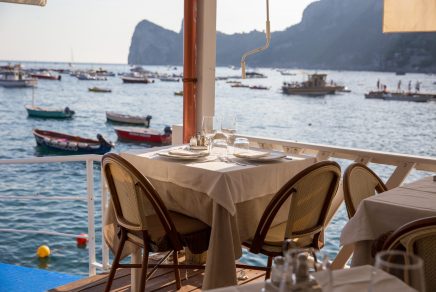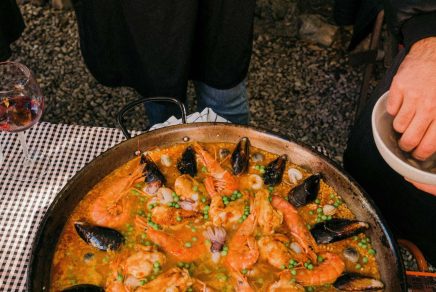Share the article
Anyone who’s traveled to Spain knows the Spanish love for late evenings, staying out late, and enjoying outdoor life when the heat subsides. Nowhere is this nightlife more vibrant than in cosmopolitan Barcelona, where locals feast and mingle until the early hours. Dinner in Barcelona typically begins between 8 p.m. and 10 p.m.—sometimes even later! So, what’s the perfect way to bridge the gap between the end of the workday and dinner? Indulge in some delicious tapas in Barcelona, claro!
The origins of tapas
The word “tapas” comes from the Spanish word “tapar,” meaning “to cover.” Originally, tapas were bread pieces covering drinks to keep insects out. Topped with a slice of meat or cheese, these tapas eventually became as important as the drink.
Legends of the tapas culture
The origin of tapas culture is somewhat controversial, with various stories and legends suggesting different beginnings. One tale involves a king who could only eat small bites, later decreeing this in all taverns. Another story tells of a king ensuring workers didn’t get drunk by serving food with wine. A third theory suggests field workers ate smaller meals throughout the day for productivity.
Social eating: the heart of tapas
Tapas are always part of social gatherings, emphasizing time with friends. They describe a way of eating rather than a specific type of food. Tapas bars are typically noisy, filled with lively conversation and laughter. As you wander through Barcelona, you’ll likely hear a local tapas bar before seeing it. Tapeo, or the art of eating tapas, is similar to bar hopping but more elaborate, with food always accompanying drinks. Spaniards take the “hopping” seriously, rarely having more than one drink per bar.
Types of tapas in Barcelona
Tapas are not meant to be a full meal but can range from simple olives to more elaborate stews. They often use seasonal produce and reflect the local culinary heritage.
In Barcelona, some classics such as pan con tomate (bread spread with ripe tomatoes), tortilla de patatas (Spanish omelette), marinated sardines or anchovies, garlic prawns, patatas bravas, and cheeses and charcuterie can be found on most menus.
The evolution of tapas bars
Regional tapas bars traditionally offer a tapa with every drink you order. The salty nature of tapas ensures customers order more drinks. However, with tourism’s rise, it’s rare to find free tapas in big cities like Barcelona. Tapas culture is about more than just eating; it’s about savoring life. This ritual brings people together, encouraging conversation and connection. The mix of flavors, the vibrant atmosphere, and the camaraderie make tapas an integral part of the Barcelona experience.







